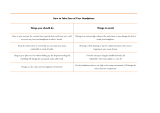
Introduction
1
SSL 2+ User Guide
Introduction to SSL 2+
Congratulations on purchasing your SSL 2+ USB audio interface. A whole world of recording, writing and production awaits you!
We know you’re probably keen to get up-and-running, so this User Guide is set out to be as informative and useful as possible.
It should provide you with a solid reference for how to get the best out of your SSL 2+. If you get stuck, don’t worry, the support
section of our website is full of useful resources to get you going again.
From Abbey Road To Your Desktop
SSL equipment has been at the heart of record production for the best part of four decades. If you have ever stepped foot inside
of a professional recording studio or perhaps watched a documentary following the making of any kind of classic album, then the
chances are that you have already seen an SSL console before. We are talking about studios like Abbey Road; musical home to The
Beatles, Larrabee; birthplace of Michael Jackson’s legendary ‘Dangerous’ album or Conway Recording Studios, which regularly
hosts the world's biggest artists such as Taylor Swift, Pharrell Williams and Daft Punk. This list goes on and covers thousands of
SSL-equipped studios worldwide.
Of course, today, you no longer need to head into a big commercial studio to get started recording music - all you need is a laptop,
a microphone and an audio interface... and that’s where SSL 2+ comes in. Over forty years' experience in manufacturing the finest
audio consoles the world has ever seen (and heard!) brings us to this new and exciting point. With SSL 2+, you can now begin
your musical journey recording on an SSL, from the comfort of your own desktop...wherever that may be!
Technical Excellence Breeds Creative Freedom
No one understands the recording process better than us. The widespread success of SSL consoles such as the SL4000E/G,
SL9000J, XL9000K and more recently AWS and Duality, is built upon a thorough and detailed understanding of what musicians
all over the world need to be creative. It’s really simple, the recording equipment should be as invisible as possible in the session.
Creative ideas need to flow and technology has to allow those ideas to be captured effortlessly into the computer. Workflow is
paramount and a great sound is essential. SSL consoles are designed with workflow at their heart, to ensure that the artist’s vision is
ready to be captured whenever inspiration strikes. SSL audio circuitry is engineered to the highest standards to provide impeccable
sound quality; capturing every last note, every change in dynamics and every musical nuance.
Standing On The Shoulders Of Giants
SSL equipment has always evolved to meet the exacting needs and demands of the best producers all over the world. As a
company, we are constantly innovating and developing our products to make sure that they continue to meet and exceed new
benchmarks. We have always listened carefully to user feedback to ensure that we are creating audio products that are referred to
by professionals as ‘instruments in their own right’. The technology should provide a platform for the creator and that platform needs
to aid, not hinder the musical performance because at the end of the day, a great song is nothing without a great performance.
The Start Of Your SSL Journey...
So here we are at the start of a new chapter with SSL 2 and SSL 2+, putting our many years of experience into some fresh audio
creation tools designed to allow you to focus on being creative whilst we take care of the sound. You will be following in the
footsteps of artists with many thousands of hit records between them. Records that were and continue to be engineered, mixed
and produced on SSL consoles; from Dr. Dre to Madonna, Timbaland to Green Day, from Ed Sheeran to The Killers, whatever your
musical influences... you are in safe hands.






















